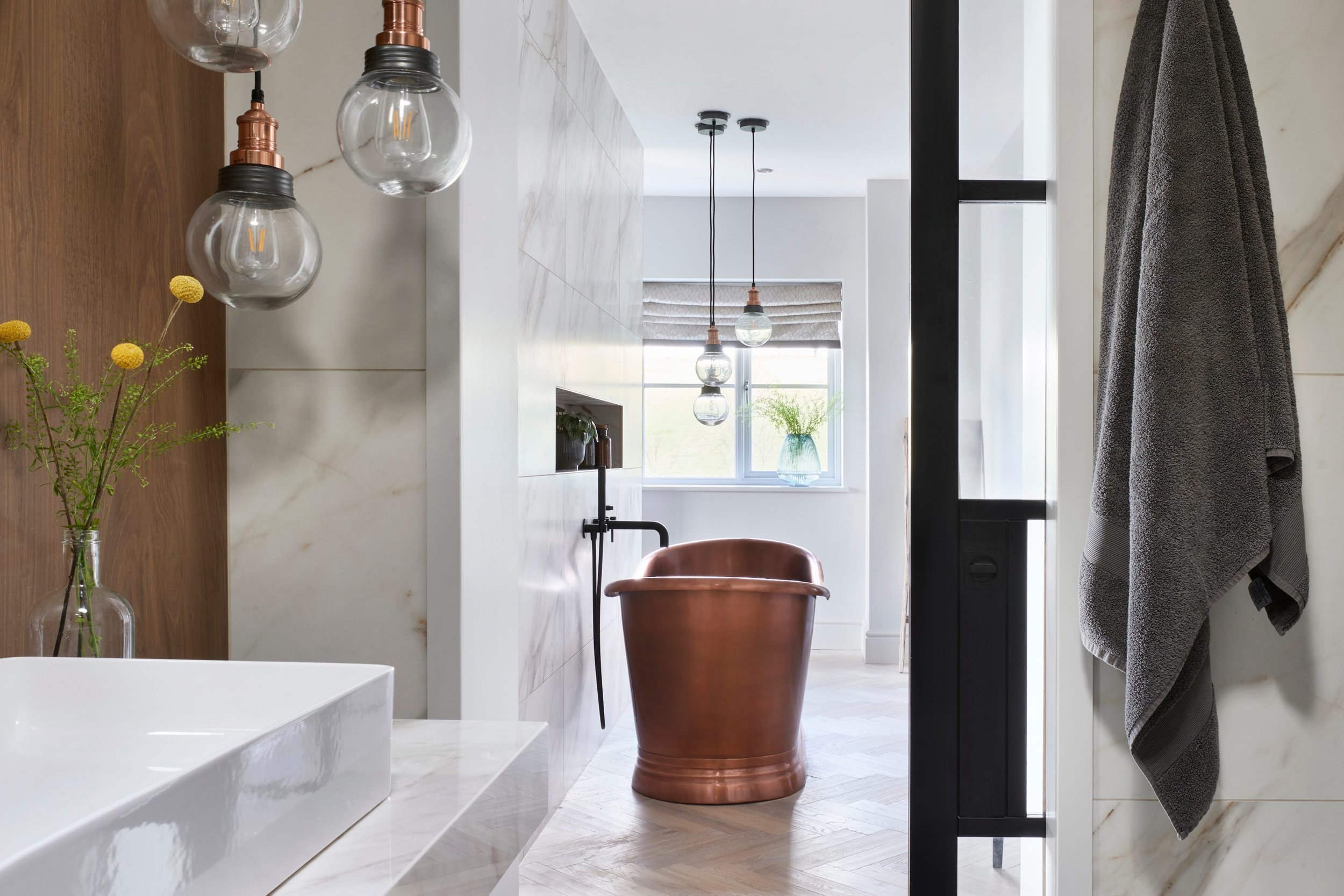How to: Care for a copper bath
Copper baths make a statement in any bathroom, with a timeless elegance and warmth that few other materials can match. However, maintaining their lustrous appearance requires proper care and cleaning. Here, Senior Designer Neil Curtis from Ripples Bath shares some advice for caring for your copper bath to keep it looking its best for years to come.
Understanding your copper bath
Before kickstarting the cleaning process, it’s important to understand the nature of copper as a material. Copper is a natural metal that develops its own patina over time - a protective layer that can give the tub a unique, aged look. Some people love the character that a patina brings, while others prefer the shiny, new look of polished copper. Your cleaning routine may therefore have to be adapted based on your preference.
The first port of call when it comes to cleaning a copper bath is to thoroughly read the manufacturer’s guidelines. These should give you the most appropriate cleaning advice and instructions for your particular bath. However, if you no longer have these available to you, and can’t contact the manufacturer, then the following tips might help.
Regular cleaning
If you like the idea that your bath might develop its own patina then all is required is a regular, but relatively light, cleaning routine using the following steps:
Use a mixture of warm water and mild dish soap/detergent and gently scrub the surface of the tub with a soft cloth or sponge. Avoid abrasive scrubbers, as they can scratch the copper
After washing with soap, thoroughly rinse the bath with warm water to ensure no soap residue is left behind
Use a soft, dry cloth to wipe down the bath. This step is crucial because standing water can lead to water spots and encourage the development of an unwanted and irregular patina
Deep cleaning
For a more thorough cleaning, especially if you notice tarnishing or dullness, follow these steps:
Create a paste with baking soda and a small amount of water. Apply the paste to any tarnished areas and gently rub with a soft cloth. Baking soda is a gentle abrasive that can help remove imperfections without scratching the copper
For tougher stains, mix equal parts white vinegar and water. Dampen a cloth with the solution and gently scrub the affected areas. Rinse well and dry thoroughly.
If you prefer a polished look, consider using a specialised copper polish or beeswax. Apply a small amount to a soft cloth and buff the surface in circular motions. This will help protect the copper and maintain its shine.
Preventative maintenance
Whichever look you like for your copper bath, there are some preventative tips I would recommend following to contribute to the longevity of your bath:
First of all, it’s important to rinse your copper bath with warm water after each use and dry it off with a cloth or towel. This will help to remove soap residue, oils, and any other bath products which can easily build up
Never use harsh chemicals, bleach, or abrasive cleaners on your copper bath, as these can damage the metal and strip its natural patina
Ensure your bathroom is well-ventilated to reduce humidity levels as high humidity can accelerate the development of a patina
Opt for gentle, pH-balanced bath products to prevent potential damage to the copper surface
Some copper baths come with a protective coating. If yours does, follow the manufacturer’s instructions for care. If not, you might consider applying a clear wax or specialised copper protectant to help preserve its appearance.
For more bathroom advice from our team of specialist bathroom designers, download or request a copy of our free Style Guide.
Want to find out where to start when it comes to re-designing a bathroom? Read our expert advice with helpful information on every part of the project.





